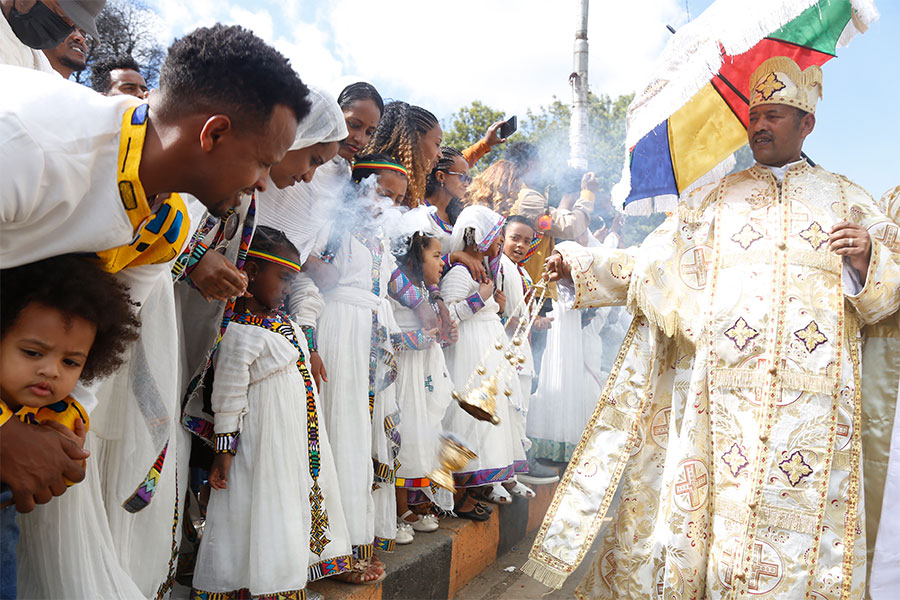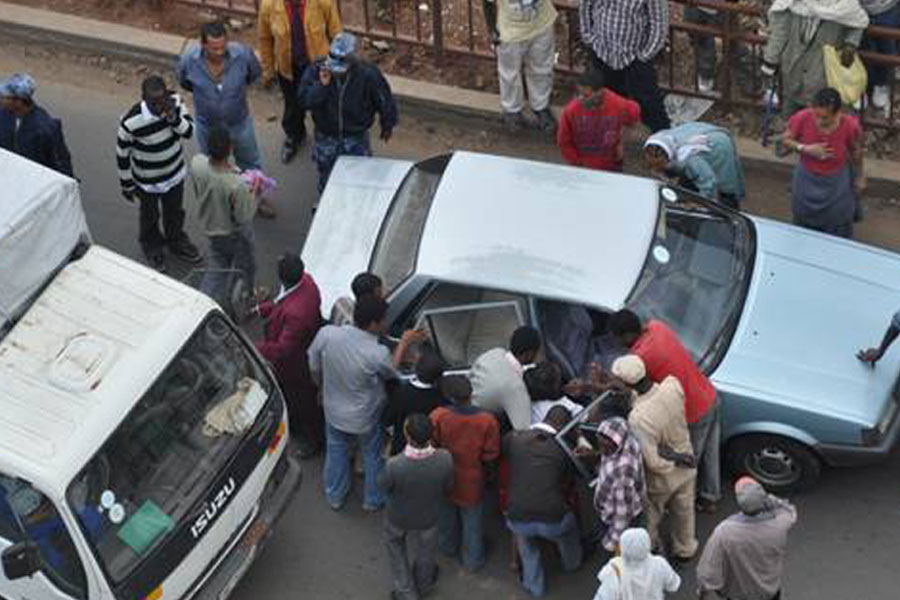
Fortune News | Jan 22,2022
Soccer is neither only a show of wits and guts nor a playoff between competent players. It is a layered game that involves players, spectators and the general atmosphere of the moment. The dusty sun-baked Sundays and the few heavy showers as the rainy season approaches have rarely ever been of much concern to players and spectators at Addis Abeba Stadium’s Katanga, Mismar Tera, Keman Anisheand DAF Truck stands.
If the start of the season coincides with major teams playing one another, what a mess it will be. Pandemonium and stampedes ensue, stones will be showered by some aggrieved group, and the police come rushing with their cracking whips and lashes. Some people doubtlessly get injured – a sight that has long been tolerated as an occasional episode at soccer scenes.
The spectacle of getting through one's line is another headache. Getting squeezed then breaking through to grab tickets from a person inside a tiny office over a window. By the time one gets through the turnstile, clothes and shoes will be messy if not torn, perhaps with a missing wallet to boot. Yet many inside are all smiles, even if they had to stand in the head-splitting sun for lack of seats.
The matches were enjoyable to many. The passes are impressively smooth; the shots, eagle-eyed; the headers, precise; the goal-keeping, excellent; and the defending, high-octane. Inevitably, emotions, which are plentiful, are expressed in their playful ways. They are not offensive, per se, and neither are they verbally abusive. But they are jibes taken at players and their supporters constructed often through rhymes and echoed by spectators sitting in different stands.
Wisdom of the stadium pundits, I call it. It is often what is more fascinating about going to the stadium, sometimes more than the games. The dress-downs, innuendos, volcanic eruptions of celebrating goals or near misses are what make the stadium experience unforgettable.
Some spectators come to watch a only if they think their team will win; others would not miss a game for the life of them. Sometimes, emotions are too high, uncontainable. Fans fight; there are cave-ins. People could seriously get hurt.
Even watching games at home used to have some excitement. Everyone had to tune in at the exact time. There were no such things as replays or highlights in the 1970s and 80s when I grew up. Today, in a strange coincidence, at the click of a button, I can access those games and replay them several times with ease. It was a privilege there never was decades back when the games had such great relevance.
Just as impressive is how the games are being broadcast live on pay television offerings such as DStv. They have commentary in English, and instant replay is standard. It is a commendable effort to bring international attention to Ethiopia's leagues and modernise how they are packaged for presentation to audiences.
It is nonetheless sad to see the stadiums empty of spectators. It is understandable in this circumstance since it is in response to COVID-19 lockdowns, but neither is it easy to fathom soccer without the spectators that give it colour.
This all points to how the good, the bad, and the ugly of football’s autography are being rewritten. As we relive our time, reconnecting with our contemporaries, it is also interesting to witness how the combination of business and technology is revolutionalising Ethiopian soccer.
Hopefully, this beautiful game, which is the most popular in Ethiopia though the lack of growth of the game does not appear to be a testament to this, can be improved in keeping with the nostalgic environment created by players' interaction and audiences. It was a kind of group therapy in bad times and good, with its spins and twists being replayed again and again in our minds.
PUBLISHED ON
Mar 13,2021 [ VOL
21 , NO
1089]


Fortune News | Jan 22,2022

Fortune News | Dec 25,2021

Fortune News | Dec 11,2021

Editorial | Oct 09,2021

Fortune News | Apr 26,2019

View From Arada | Jun 03,2023

Radar | Nov 29,2020

Radar | Mar 27,2021

Editorial | May 15,2021

Fortune News | May 29,2021

Dec 22 , 2024 . By TIZITA SHEWAFERAW
Charged with transforming colossal state-owned enterprises into modern and competitiv...

Aug 18 , 2024 . By AKSAH ITALO
Although predictable Yonas Zerihun's job in the ride-hailing service is not immune to...

Jul 28 , 2024 . By TIZITA SHEWAFERAW
Unhabitual, perhaps too many, Samuel Gebreyohannes, 38, used to occasionally enjoy a couple of beers at breakfast. However, he recently swit...

Jul 13 , 2024 . By AKSAH ITALO
Investors who rely on tractors, trucks, and field vehicles for commuting, transporting commodities, and f...

Oct 18 , 2025
The political establishment, notably the ruling party and its top brass, has become p...

Oct 11 , 2025
Ladislas Farago, a roving Associated Press (AP) correspondent, arrived in Ethiopia in...

Oct 4 , 2025
Eyob Tekalegn (PhD) had been in the Governor's chair for only weeks when, on Septembe...

Sep 27 , 2025
Four years into an experiment with “shock therapy” in education, the national moo...